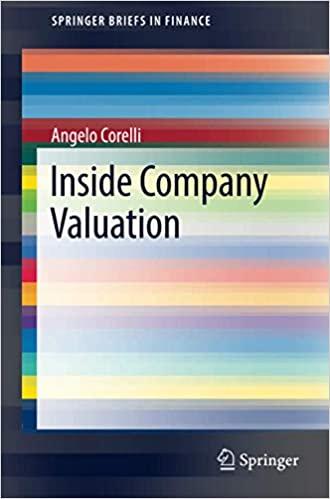Question
Angelas portfolio holds security A, which returned 12.0%, security B, which returned 15.0% and security C, which returned -5.0%. At the beginning of the year
Angelas portfolio holds security A, which returned 12.0%, security B, which returned
15.0% and security C, which returned -5.0%. At the beginning of the year 45% was invested in security A, 25.0% in security B and the remaining 30% was invested in security C. The correlation between AB is 0.75, between AC 0.35, and between BC -0.5. Securities A's standard deviation is 12%, security B's standard deviations is 15% and security C's is 10%.
Required: Calculate the:
a) Expected return and Portfolio variance of Angela's Portfolio
b) Portfolio Standard deviation of risk. What happens to the portfolio risk if market conditions reduce the risk of security B by 50%?
c) Explain what happens to a portfolio's overall risk when securities that are
uncorrelated are combined.
d) List four steps that go into selecting an optimal portfolio of risky assets.
e) A five-year bond pays interest annually. The par value is GHc 1000 and the coupon rate equals seven (7) percent. If the market's required return on the bond is eight (8) percent, at what market price does this sell for?
Literature argues that bond prices are inversely related to interest rates leading to different types of bonds issue. Briefly define Par Bonds, Premium Bonds and Discount Bonds.
f) Cal Bank has a corporate bond that matures in two years but makes semi-annual interest payments. The par value is GHc 1000, the coupon rate equals four (4) percent and the bond's market price is GHc 1019.27. Determine the bonds yield to maturity
Step by Step Solution
There are 3 Steps involved in it
Step: 1

Get Instant Access to Expert-Tailored Solutions
See step-by-step solutions with expert insights and AI powered tools for academic success
Step: 2

Step: 3

Ace Your Homework with AI
Get the answers you need in no time with our AI-driven, step-by-step assistance
Get Started


